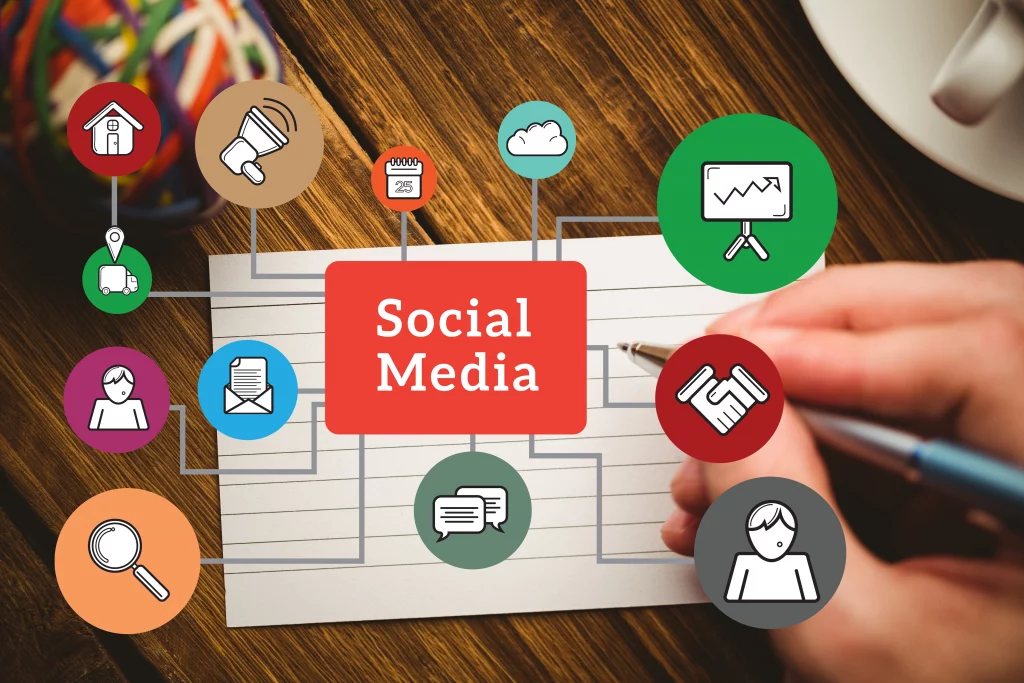Did you know that 61% of marketers say that their biggest challenge is to generate leads? Lead generation is the process of attracting and capturing the interest of potential customers who are looking for your products or services. It is important for any business because it helps you find new opportunities, increase revenue, and grow your brand.
However, it is not easy to generate leads. Many businesses struggle with finding the right audience, creating engaging content, optimizing their website, following up with leads, etc. Some common mistakes that they make are not having a clear strategy, targeting the wrong keywords, using low-quality lead magnets, etc.
In this guide, you will learn how to generate more leads in 2023 with these 5 proven strategies and examples. You will discover how to use content marketing, SEO, social media, email marketing, and Neoleads to attract and convert more leads for your business.
What is Lead Generation?
The activity or process of identifying and cultivating new clients for a company’s products or services is known as lead generation.
A lead is a person or business who may be interested in your product or service. Every lead consists of information that you have on them, such as name, contact details, company name, location, job title, etc. Leads can be categorized into different types based on their interest level, information quality, or readiness to buy. For example, a warm lead is someone who showed their interest by themselves and found you on their own, while a cold lead is someone who you generated by targeting them with your marketing campaigns. A prospect is someone who has expressed interest in your product or service and is qualified to buy from you, while a customer is someone who has already bought from you.
The lead generation process is the set of actions that you take to attract and capture the interest of potential customers. The main stages of the lead generation process are:
1) Attract:
This is where you use various marketing channels and methods to reach your target audience and make them aware of your brand and your products or services. Some examples of marketing channels and methods are websites, blogs, social media, SEO, PPC, email marketing, etc.
2) Capture:
This is where you use various lead magnets and forms to collect contact information and other data from your potential customers. Some examples of lead magnets and forms are ebooks, webinars, quizzes, surveys, newsletters, etc.
3) Nurture:
This is where you use various communication channels and methods to educate and engage your leads and move them closer to buying from you. Some examples of communication channels and methods are email campaigns, SMS campaigns, phone calls, chatbots, etc.
4) Convert:
This is where you use various sales techniques and methods to persuade your leads to buy from you or take the next step in the sales funnel. Some examples of sales techniques and methods are demos, trials, discounts, testimonials, etc.
What are lead generation strategies and what are their goals?
Lead generation strategies are the plans and actions that you take to generate more leads for your business. The main types of lead generation strategies are inbound and outbound.
Inbound strategies are those that focus on attracting leads who are already looking for your products or services or have a problem that you can solve. The goal of inbound strategies is to provide value and education to your leads and build trust and authority with them. Some examples of inbound strategies are content marketing, SEO, social media marketing, etc.
Outbound strategies are those that focus on reaching out to leads who may not be aware of your products or services or have a problem that you can solve. The goal of outbound strategies is to generate interest and curiosity in your leads and create opportunities for further communication with them. Some examples of outbound strategies are cold emailing, cold calling, direct mail, etc.
How to Generate Leads with Content Marketing
Content marketing is a sort of marketing in which valuable, relevant, and consistent content is created and distributed in order to attract and maintain an audience that is defined and ultimately result in profitable consumer action.
Content marketing can help you produce more leads by doing the following:
- Building trust and authority with your audience by providing useful and informative content that solves their problems or answers their questions.
- Increasing your organic traffic and visibility by optimizing your content for search engines and keywords that your audience is searching for.
- Generating more referrals and shares by creating engaging and shareable content that your audience likes and recommends to others.
- Creating more opportunities for conversion by adding clear and compelling calls to action to your content that invite your audience to take the next step in your sales funnel.
However, content marketing also has some challenges and drawbacks such as:
- Requiring a lot of time, effort, and resources to create high-quality and consistent content that meets your audience’s needs and expectations.
- Facing a lot of competition and noise from other content creators who are targeting the same audience and keywords as you.
- Measuring the effectiveness and ROI of your content marketing efforts by tracking the right metrics and KPIs that align with your goals.
What are lead magnets and how they can capture contact information?
Lead magnets are pieces of content or other incentives that you offer to your audience in exchange for their contact information such as name, email address, phone number, etc. Lead magnets can help you capture contact information by:
- Providing value and solving a specific problem or pain point that your audience has.
- Being relevant and related to your product or service that you want to sell to your audience.
- Being easy to access and consume by your audience without requiring too much time or effort.
- Being attractive and appealing by having a catchy title, a professional design, and a clear benefit for your audience.
Some common types of lead magnets are ebooks, checklists, webinars, quizzes, templates, etc.
How to Generate Leads with SEO?
SEO stands for search engine optimization, which is the process of improving your website and content to rank higher on search engines like Google and Bing. The goal of SEO is to increase your organic traffic and visibility by matching your content with the search queries of your potential customers.

SEO can help you generate more leads by:
- Reaching your target audience who are actively looking for your products or services or have a problem that you can solve.
- Building trust and authority with your audience by providing useful and relevant content that answers their questions or solves their problems.
- Generating more referrals and shares by creating engaging and shareable content that your audience likes and recommends to others.
- Creating more opportunities for conversion by adding clear and compelling calls to action to your content that invites your audience to take the next step in your sales funnel.
However, SEO also has some challenges and drawbacks such as:
- It requires a lot of time, effort, and resources to create high-quality and consistent content that meets your audience’s needs and expectations.
- Facing a lot of competition and changes from other websites and search engines that are targeting the same audience and keywords as you.
- Measuring the effectiveness and ROI of your SEO efforts by tracking the right metrics and KPIs that align with your goals.
What are keywords and how to find and use them for lead generation?
Keywords are words or phrases that best define the topic of your work. They are also the words or phrases that your potential customers use to search for your products or services on search engines. Keywords are important for SEO because they help you match your content with the search queries of your audience.
Some common types of keywords are:
- Head keywords: These are broad and general keywords that have a high search volume but also a high competition. For example, “lead generation” is a head keyword.
- Long-tail keywords: These are specific and descriptive keywords that have a low search volume but also a low competition. For instance, “when and how to generate leads with digital marketing” is a long-tail keyword.
- LSI keywords: These are related or synonymous keywords that have a similar meaning or intent as your main keyword. For example, “lead gen”, “generate leads”, and “lead magnet” are LSI keywords for “lead generation”.
To find the best keywords for your content, you need to do keyword research, which is the process of discovering and analyzing the keywords that your audience is searching for. You can use tools like Ahrefs or SEMrush to conduct keyword research and find relevant keywords with high potential.
Here are some examples of effective keywords to generate leads that I have used or seen:
- How to generate more leads in 2023: This is a long-tail keyword that has a low competition but a high potential. It is effective because it targets a specific problem and a specific time frame that your audience might have. It also implies that you have a solution or a guide for them.
- Best lead generation tools in 2023: This is another long-tail keyword that has a low competition but a high potential. It is effective because it targets a specific need and a specific time frame that your audience might have. It also implies that you have a comparison or a recommendation for them.
- Lead generation strategies for small businesses: This is another long-tail keyword that has a low competition but a high potential. It is effective because it targets a specific segment and a specific topic that your audience might belong to or be interested in. It also implies that you have some tips or advice for them.
Tips on how to optimize your website and content for SEO
Here are some tips on how to optimize your website and content for SEO:
- Use your keywords in your title, headings, URL, meta description, and content. Avoid keyword stuffing by using them naturally. You can also use variations and synonyms of your keywords to diversify your content and rank for more search queries.
- Use internal and external links in your content. Internal links are links that point to other pages on your website, while external links are links that point to other websites. Internal links help you create a logical structure and hierarchy for your website and improve the user experience and navigation. External links help you provide additional value and information to your audience and build trust and authority with search engines.
- Use images, videos, and other multimedia elements in your content. Images, videos, and other multimedia elements help you make your content more engaging and appealing to your audience and reduce the bounce rate and increase the dwell time on your website. They also help you convey your message more effectively and provide visual cues for your audience. Make sure to use relevant and high-quality images, videos, and other multimedia elements that match your content and brand. Also, make sure to optimize them for SEO by using descriptive file names, alt texts, captions, etc.
- Use a responsive design for your website. A responsive design is a design that adapts to different screen sizes and devices such as desktops, laptops, tablets, and smartphones. A responsive design helps you provide a consistent and optimal user experience for your audience regardless of the device they use to access your website. It also helps you improve your SEO by making your website faster, easier to crawl, and more mobile-friendly.
How to Generate Leads with Social Media
Social media refers to websites and software that let users engage in social networking activities or generate and share data.

You may increase your lead generation with social media by:
- Reaching a large and diverse audience who are interested in your products or services or have a problem that you can solve.
- Building trust and authority with your audience by providing useful and relevant content that showcases your expertise and value proposition.
- Generating more referrals and shares by creating engaging and shareable content that your audience likes and recommends to others.
- Creating more opportunities for conversion by adding clear and compelling calls to action to your content that invites your audience to take the next step in your sales funnel.
However, social media also has some challenges and drawbacks such as: –
- It requires a lot of time, effort, and resources to create high-quality and consistent content that meets your audience’s needs and expectations.
- Facing a lot of competition and noise from other businesses and influencers who are targeting the same audience and keywords as you.
- Measuring the effectiveness and ROI of your social media efforts by tracking the right metrics and KPIs that align with your goals.
Examples of effective social media platforms for lead generation
Here are some examples of effective social media platforms for lead generation that I have used or seen:
Facebook:
This is a social networking platform that has over 2 billion monthly active users. It is effective because it allows me to reach a large and diverse audience who are interested in my products or services or have a problem that I can solve. It also allows me to create different types of content such as posts, stories, live videos, etc., as well as use various features such as groups, pages, events, ads, etc., to engage with my audience and generate leads.
LinkedIn:
This is a social networking platform that has over 700 million monthly active users. It is effective because it allows me to reach a professional and targeted audience who are looking for solutions, opportunities, or connections in their industry or niche. It also allows me to create different types of content such as articles, posts, stories, etc., as well as use various features such as groups, pages, events, ads, etc., to showcase my expertise and value proposition and generate leads.
Twitter:
This is a social networking platform that has over 300 million monthly active users. It is effective because it allows me to reach a fast and responsive audience who are looking for the latest news, trends, or insights in their industry or niche. It also allows me to create short and concise content such as tweets, retweets, replies, etc., as well as use various features such as hashtags, mentions, polls, etc., to create buzz and generate leads.
How do you create and promote compelling social media content?
Here are some tips on how to create and share engaging content on social media:
- Know your audience and their needs: You need to create content that is relevant and valuable to your audience and that solves their problems or answers their questions. You also need to use the language, tone, and style that resonate with your audience and reflect your brand personality.
- Use a mix of content types and formats: You need to create content that is diverse and appealing to your audience and that showcases your products or services in different ways. You also need to use different types of content such as text, images, videos, audio, etc., and different formats such as posts, stories, live videos, etc., to keep your audience interested and engaged.
- Use catchy headlines and captions: You need to create headlines and captions that grab the attention of your audience and make them want to click on your content or read more. You also need to use keywords, power words, numbers, questions, etc., to make your headlines and captions more catchy and SEO-friendly.
- Use clear and compelling calls to action: You need to create calls to action that encourage your audience to take the next step in your sales funnel or engage with your brand. You also need to use verbs, urgency, benefits, etc., to make your calls to action more clear and compelling.
- Use tools and techniques for content creation and distribution: You need to use tools and techniques that help you create high-quality and consistent content that meets your audience’s needs and expectations. You also need to use tools and techniques that help you distribute your content effectively and efficiently across different platforms and channels. Some examples of tools and techniques are Canva, Buffer, Hootsuite, etc.
How to Generate Leads with Email Marketing
Email marketing is a type of marketing that involves sending emails to a group of people who have given you permission to contact them. The goal of email marketing is to nurture and convert leads into customers by providing them with valuable and relevant content.

Email marketing can help you generate more leads by:
- Building trust and loyalty with your leads by sending them personalized and timely emails that address their needs and interests.
- Educating and informing your leads by sending them useful and relevant content that answers their questions or solves their problems.
- Engaging and entertaining your leads by sending them interactive and creative content that sparks their curiosity or makes them laugh.
- Persuading and influencing your leads by sending them compelling and convincing content that showcases your value proposition and social proof.
However, email marketing also has some challenges and drawbacks such as:
- Requiring a lot of time, effort, and resources to create high-quality and consistent emails that meet your leads’ needs and expectations.
- Facing a lot of competition and noise from other email marketers who are targeting the same leads as you.
- Measuring the effectiveness and ROI of your email marketing efforts by tracking the right metrics and KPIs that align with your goals.
What are email campaigns and how to create and send them?
Email campaigns are series of emails that are sent to a specific segment of your email list for a specific purpose or goal. The following are some examples of common email campaigns:
Welcome email campaigns:
These are emails that are sent to new subscribers who have just joined your email list. The purpose of these emails is to introduce yourself, thank them for subscribing, set their expectations, and offer them a lead magnet or an incentive.
Newsletter email campaigns:
These are emails that are sent to your subscribers on a regular basis, usually weekly or monthly. The purpose of these emails is to provide them with valuable and relevant content such as news, tips, updates, etc., as well as promote your products or services.
Follow-up email campaigns:
These are emails that are sent to your leads after they have taken a specific action on your website or in your previous emails, such as downloading a lead magnet, signing up for a webinar, requesting a demo, etc. The purpose of these emails is to nurture them further, provide them with more information, overcome their objections, and persuade them to buy from you or take the next step in your sales funnel.
To create and send effective email campaigns, you need to follow these steps:
Define your goal and audience:
You need to decide what you want to achieve with your email campaign and who you want to target with it. You also need to segment your email list based on criteria such as demographics, behavior, interests, etc., so that you can send personalized and relevant emails to each segment.
Choose your type and format:
You need to choose the type of email campaign that best suits your goal and audience, such as welcome, newsletter, follow-up, etc. You also need to choose the format of your email campaign, such as plain text, HTML, rich media, etc., depending on the type of content that you want to include in your emails.
Write your subject line and preheader text:
You need to write a catchy and concise subject line that grabs the attention of your recipients and makes them want to open your email. You also need to write a short and clear preheader text that summarizes the main idea or benefit of your email.
Write your body copy:
You need to write a compelling and convincing body copy that delivers your message clearly and effectively. You also need to use keywords, power words, numbers, questions, etc., to make your body copy more catchy and SEO-friendly.
Add your call-to-action:
You need to add a clear and compelling call-to-action that encourages your recipients to take the desired action after reading your email. You also need to use verbs, urgency, benefits, etc., to make your call-to-action more clear and persuasive.
Design your layout:
You need to design a professional and attractive layout that enhances the readability and usability of your email. You also need to use colors, fonts, images, videos, etc., that match your brand identity and style.
Test and optimize your email:
You need to test and optimize your email before sending it to your recipients. You also need to use tools and techniques such as A/B testing, spam testing, deliverability testing, etc., to improve the performance and results of your email campaign
Generate Leads with Neoleads
Do you want to generate more leads in less time and with less effort? If yes, then you need to try Neoleads, the best lead generation platform that uses AI technology to find and connect with your ideal prospects.
Neoleads can help you generate more leads in less time and with less effort by:
- Finding your ideal prospects using smart search: Neoleads uses AI technology to search millions of online sources and databases to find the most relevant and qualified prospects for your business. You can also use advanced filters and criteria to narrow down your search and target your niche.
- Connecting with your prospects using personalized outreach: Neoleads uses AI technology to create and send personalized emails and messages to your prospects that match their needs and interests. You can also use templates and variables to customize your outreach and increase your response rate.
- Nurturing your prospects using automated follow-up: Neoleads uses AI technology to track and analyze the behavior and actions of your prospects and send them timely and appropriate follow-ups. You can also use triggers and sequences to automate your follow-up process and move your prospects closer to buying from you or taking the next step in your sales funnel.
Don’t miss this opportunity to generate more leads in less time and with less effort. Sign up for a free trial of Neoleads today and see the results for yourself. Hurry, since this offer is only available for a short time.
Conclusion
Lead generation is the process of attracting and capturing the interest of potential customers who are looking for your products or services. It is important for any business because it helps you find new opportunities, increase revenue, and grow your brand.
In this guide, you have learned how to generate more leads in 2023 with these 5 proven strategies and examples. You have discovered how to use content marketing, SEO, social media, email marketing, and Neoleads to attract and convert more leads for your business.
Generating more leads in less time and with less effort is possible with Neoleads, the best lead generation platform that uses AI technology to find and connect with your ideal prospects. Neoleads offers features and benefits such as smart search, personalized outreach, automated follow-up, and more.
Don’t miss this opportunity to generate more leads in 2023 with Neoleads. Sign up for a free trial today and see the results for yourself. This is a limited-time offer, so grab it immediately.





